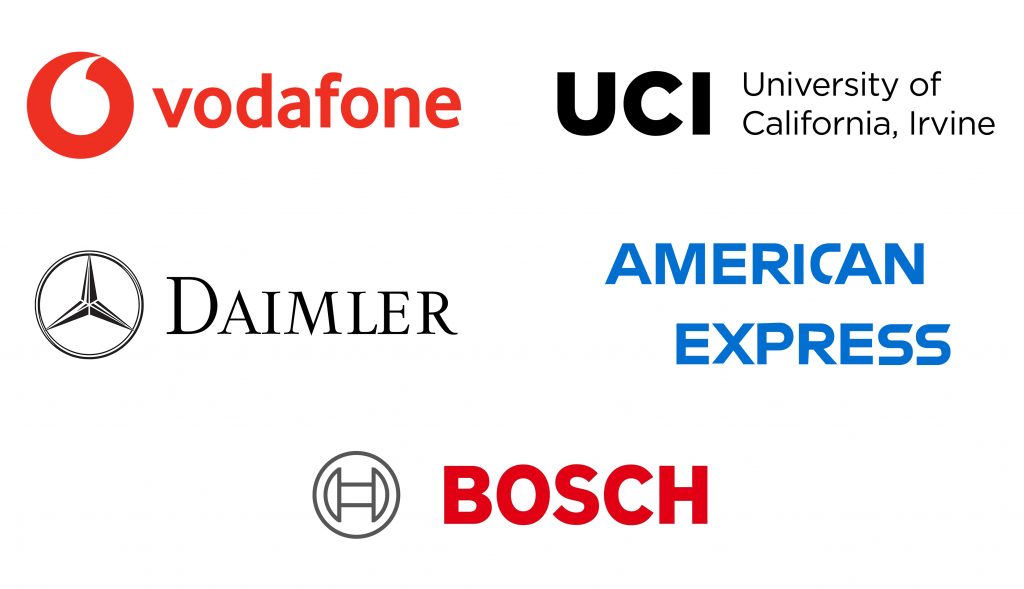How to make a 311 service request using a chatbot
May 10th, 2020 – 1 PM MDT
TRUSTED BY 500+ GLOBAL BRANDS

TRUSTED BY 500+ GLOBAL BRANDS

In September 2018, Domino’s launched a nationwide marketing campaign called Paving for Pizza. The basic premise was that potholes were causing the systematic destruction of pizzas during delivery, so Domino’s built an app that allowed customers to report potholes which Domino’s would then fix. In the weeks following the launch, the campaign got a lot of buzz, and with good reason.
Potholes are ubiquitous in cities across America.
In fact, in an increasingly polarized political climate, few issues bring both ends of the political spectrum together like the issue of potholes. Whether you are a cattle rancher in Montana, a pizza delivery driver in the suburbs of Milwaukee, or even an entrepreneur in California, we can all agree on a mutual hatred of potholes.
And while Domino’s campaign was a light-hearted spin on the issue, the situation is nothing short of a crisis.
In most of the country, roads are key lines of communication that people depend on for getting to work, attending school, running businesses, and accessing healthcare, so finding a solution is not just preferable it is necessary. Unfortunately, local governments don’t have the resources to do so.
Hiring the necessary employees to monitor, report, and fix potholes is too expensive for most government agencies. The advent of the internet helped mitigate this problem but only to a limited extent. Cities implement online 311 services that elicit pothole data from the citizenry, but again, a lack of resources prevents governments from hiring the necessary web developers and UX designers to build a mobile-optimized, intuitive app that citizens actually want to use.
Within this quagmire, we propose a first-of-its-kind bottom-up solution that allows government agencies to efficiently crowd-source pothole data from the general public using state-of-the-art conversational technology at an affordable price point.
Our technology helps citizens connect to the city making the process simple, enjoyable, and engaging while streamlining city processes. The result is two-fold: happy citizens and significant savings in resources.
The Problem
The issue with reporting issues like potholes has less to do with getting people to report and more to do with improving the ways that people can report.
They have the ability to quickly communicate issues with accuracy because they are the stakeholders who use city infrastructure every day. If their complaints could be conveyed to city officials in a seamless manner, cities could handle issue resolution in a much more efficient way.
But this is not the case.
Most 311 reporting systems today are inefficient and archaic. From automated phone trees to uninspiring web forms, cities don’t make it easy for citizens to report their very real concerns.
Citizens are the eyes and the ears of the city.
From the perspective of the government official as well, these methods of information capture are far from ideal. Inefficient reporting often means that government officials waste hours wrangling garbled voicemails and convoluted emails from concerned citizens. The mental toll of carrying out such repetitive work every single day is what causes the high levels of frustration, and attrition amongst government employees.
To make matters worse, there is seemingly no way to fix this problem. Government organizations at all levels struggle to acquire the necessary resources to function at full potential. A perfect storm of budget restrictions and the high cost of hiring, training, paying, and replacing staff ensure that agencies cannot retain the staff necessary to field all citizen inquiries efficiently or build the digital infrastructure necessary to automate this process.
The Solution
Chatbots are automated support agents that can help citizens log issues with the city in a focused and engaging interface that makes citizens an integral part of maintaining their own city. At the core of a chatbot’s value is the interface. For citizens, chat interfaces offer three primary benefits:
Familiarity
Since most people today are accustomed to texting their family and friends on apps like iMessage and WhatsApp, the learning curve for using a chatbot is practically non-existent. Everyone will know how to interact with a chatbot as soon as they land on it.
Mobile Optimization
The paradigm of message bubbles was pioneered by apps like WhatsApp and iMessage which began on mobile screens. This means that unlike traditional websites that are built for desktops first and then ported over to mobile screens, chat interfaces at a fundamental level are made with the mobile user in mind.
Engagement
Chat interfaces facilitate a back-and-forth conversation between the citizen and the bot. This means that at any given stage of the interaction, the citizen is engaged by the appearance of new message bubbles on the screen. In an age where attention spans are at an all-time low, this form of interaction ensures that citizens actually complete service requests when they begin them.
On the backend, our platform automates a majority of the work currently relying on manual entry from employees. Our system delivers three specific benefits for cities:
Scalability
Since the chatbot is completely automated, it will be able to handle millions of concurrent conversations promptly regardless of the time of day or the day of the week.
Efficiency
Automating this process can save a city hundreds of hours a month in mundane data entry and gross inefficiencies in communication. Furthermore, through smart data transfers. Our system logs all the issues in a database, which can be sent directly to city databases or exist in a cloud database, and the citizen’s submission is added to a Google Map in real-time. Now, employees and road crews can easily monitor issues as they arise, and formulate efficient routes to address them.
Affordability
Our platform will mark a significant reduction in personnel resources and budget the city has to devote to daily tasks that can easily be automated. This boosts employee satisfaction and offers the city greater flexibility in redelegating resources to other areas.
For your consideration, you can preview the 311 chatbot demo we built for the City of Billings in the widget below.
Conclusion
As citizens, we all want to take care of the city we call home. Chatbots provide a simple yet interactive interface that opens a direct line to communicate with city services and employees. Chat interfaces record the highest uses out of all social media channels combined. Throughout an average day, we text numerous people and even businesses. So why is the government so slow to adopt this medium?
We often hear that government employees have only considered live-chat between humans. Our solution, on the other hand, leverages AI through an automated chat interface to eliminate the need for live agents. This is critical to the government as personnel resources are almost always limited. By completely automating 311 services, municipalities can expect to save at least one FTE a month’s worth of time while gathering a deep insight into the issues surrounding their city.
In September 2018, Domino’s launched a nationwide marketing campaign called Paving for Pizza. The basic premise was that potholes were causing the systematic destruction of pizzas during delivery, so Domino’s built an app that allowed customers to report potholes which Domino’s would then fix. In the weeks following the launch, the campaign got a lot of buzz, and with good reason.
Potholes are ubiquitous in cities across America.
In fact, in an increasingly polarized political climate, few issues bring both ends of the political spectrum together like the issue of potholes. Whether you are a cattle rancher in Montana, a pizza delivery driver in the suburbs of Milwaukee, or even an entrepreneur in California, we can all agree on a mutual hatred of potholes.
And while Domino’s campaign was a light-hearted spin on the issue, the situation is nothing short of a crisis.
In most of the country, roads are key lines of communication that people depend on for getting to work, attending school, running businesses, and accessing healthcare, so finding a solution is not just preferable it is necessary. Unfortunately, local governments don’t have the resources to do so.
Hiring the necessary employees to monitor, report, and fix potholes is too expensive for most government agencies. The advent of the internet helped mitigate this problem but only to a limited extent. Cities implement online 311 services that elicit pothole data from the citizenry, but again, a lack of resources prevents governments from hiring the necessary web developers and UX designers to build a mobile-optimized, intuitive app that citizens actually want to use.
Within this quagmire, we propose a first-of-its-kind bottom-up solution that allows government agencies to efficiently crowd-source pothole data from the general public using state-of-the-art conversational technology at an affordable price point.
Our technology helps citizens connect to the city making the process simple, enjoyable, and engaging while streamlining city processes. The result is two-fold: happy citizens and significant savings in resources.
The Problem
The issue with reporting issues like potholes has less to do with getting people to report and more to do with improving the ways that people can report.
They have the ability to quickly communicate issues with accuracy because they are the stakeholders who use city infrastructure every day. If their complaints could be conveyed to city officials in a seamless manner, cities could handle issue resolution in a much more efficient way.
But this is not the case.
Most 311 reporting systems today are inefficient and archaic. From automated phone trees to uninspiring web forms, cities don’t make it easy for citizens to report their very real concerns.
Citizens are the eyes and the ears of the city.
From the perspective of the government official as well, these methods of information capture are far from ideal. Inefficient reporting often means that government officials waste hours wrangling garbled voicemails and convoluted emails from concerned citizens. The mental toll of carrying out such repetitive work every single day is what causes the high levels of frustration, and attrition amongst government employees.
To make matters worse, there is seemingly no way to fix this problem. Government organizations at all levels struggle to acquire the necessary resources to function at full potential. A perfect storm of budget restrictions and the high cost of hiring, training, paying, and replacing staff ensure that agencies cannot retain the staff necessary to field all citizen inquiries efficiently or build the digital infrastructure necessary to automate this process.
The Solution
Chatbots are automated support agents that can help citizens log issues with the city in a focused and engaging interface that makes citizens an integral part of maintaining their own city. At the core of a chatbot’s value is the interface. For citizens, chat interfaces offer three primary benefits:
Familiarity
Since most people today are accustomed to texting their family and friends on apps like iMessage and WhatsApp, the learning curve for using a chatbot is practically non-existent. Everyone will know how to interact with a chatbot as soon as they land on it.
Mobile Optimization
The paradigm of message bubbles was pioneered by apps like WhatsApp and iMessage which began on mobile screens. This means that unlike traditional websites that are built for desktops first and then ported over to mobile screens, chat interfaces at a fundamental level are made with the mobile user in mind.
Engagement
Chat interfaces facilitate a back-and-forth conversation between the citizen and the bot. This means that at any given stage of the interaction, the citizen is engaged by the appearance of new message bubbles on the screen. In an age where attention spans are at an all-time low, this form of interaction ensures that citizens actually complete service requests when they begin them.
On the backend, our platform automates a majority of the work currently relying on manual entry from employees. Our system delivers three specific benefits for cities:
Scalability
Since the chatbot is completely automated, it will be able to handle millions of concurrent conversations promptly regardless of the time of day or the day of the week.
Efficiency
Automating this process can save a city hundreds of hours a month in mundane data entry and gross inefficiencies in communication. Furthermore, through smart data transfers. Our system logs all the issues in a database, which can be sent directly to city databases or exist in a cloud database, and the citizen’s submission is added to a Google Map in real-time. Now, employees and road crews can easily monitor issues as they arise, and formulate efficient routes to address them.
Affordability
Our platform will mark a significant reduction in personnel resources and budget the city has to devote to daily tasks that can easily be automated. This boosts employee satisfaction and offers the city greater flexibility in redelegating resources to other areas.
For your consideration, you can preview the 311 chatbot demo we built for the City of Billings in the widget below.
Conclusion
As citizens, we all want to take care of the city we call home. Chatbots provide a simple yet interactive interface that opens a direct line to communicate with city services and employees. Chat interfaces record the highest uses out of all social media channels combined. Throughout an average day, we text numerous people and even businesses. So why is the government so slow to adopt this medium?
We often hear that government employees have only considered live-chat between humans. Our solution, on the other hand, leverages AI through an automated chat interface to eliminate the need for live agents. This is critical to the government as personnel resources are almost always limited. By completely automating 311 services, municipalities can expect to save at least one FTE a month’s worth of time while gathering a deep insight into the issues surrounding their city.
About the speakers

About the speakers

